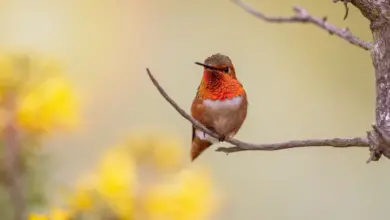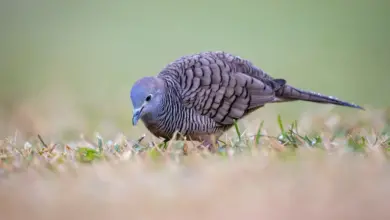Hummingbirds found in Canada
Hummingbirds found in the USA (by U.S. State) … Canada … Mexico … Puerto Rico … Jamaica … Honduras
Hummingbird Information … Hummingbird Species Photo Gallery … Hummingbird Extreme Metabolism and Survival and Flight Adaptions – Amazing Facts
The following hummingbird species have been reported in Canada (with photos and ID assistance) …
WHITE Hummingbird Sighting (Leucistic / Albino) – Rare Sighting
Rufous Hummingbirds, Selasphorus rufus – Most Common Hummingbirds in Canada: They breed in British Columbia north through the Queen Charlotte Islands; northwest to the Alaska border; east to southwestern Alberta. Occasionally, it goes as far north as southwestern Yukon and as far east as southwestern Saskatchewan.
These hummingbirds are usually found in gardens and feeders. These birds are fearless and are known for chasing away other hummingbirds and even larger birds, or rodents away from their favorite nectar feeders and flowers.
Males can easily be identified by their glossy orange-red throats.
Females have whitish, speckled throats, green backs and crowns, and rufous, white-tipped tail feathers.
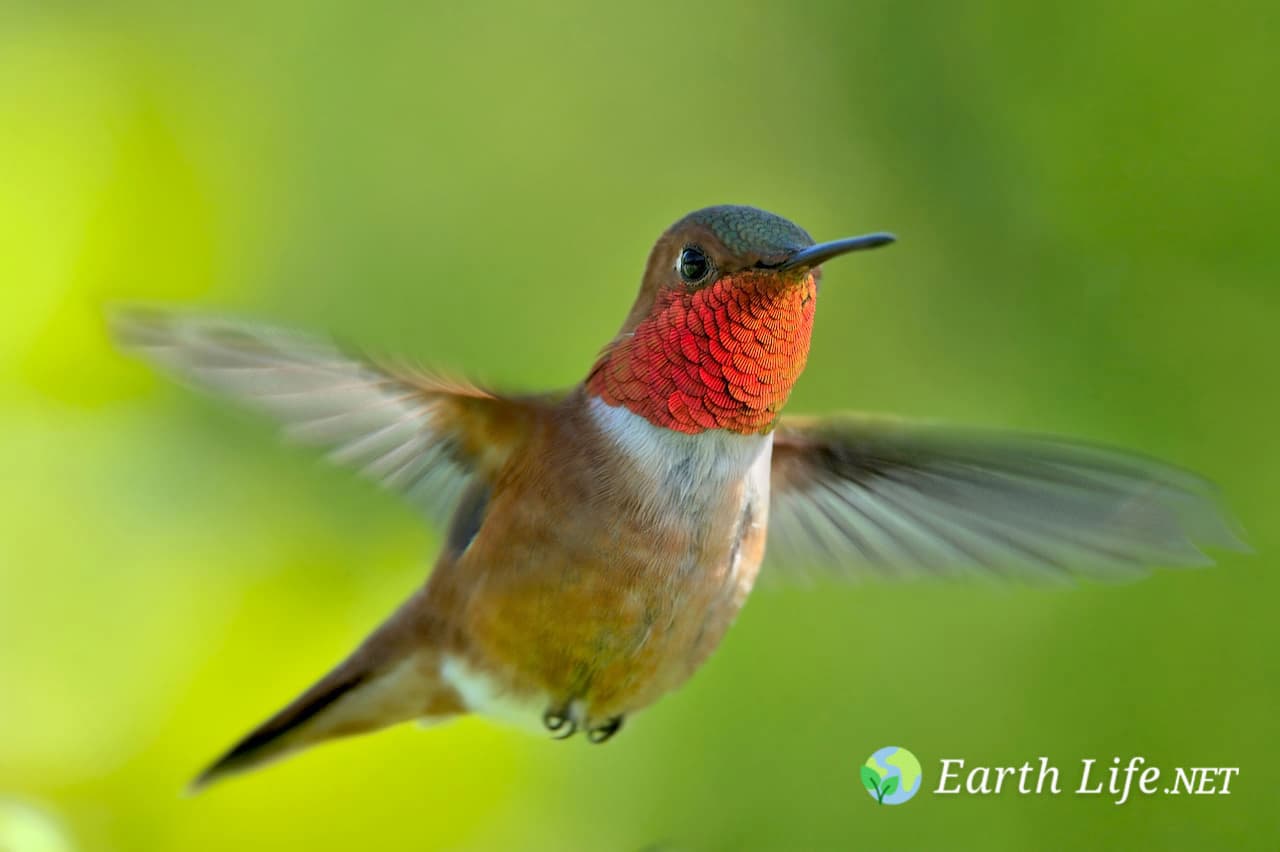

Ruby-throated Hummingbirds, Archilochus colubris – The only hummingbird found in eastern Canada. They occur in Nova Scotia (including Cape Breton Island), New Brunswick, Prince Edward Island, southern Quebec, and Ontario north to Lake Nipigon and Lake of the Woods. Their range extends westward through southern Manitoba, central Saskatchewan and central and southeastern Alberta. During the summer, it is a common hummingbird in Newfoundland. Migrating males are usually the first to arrive and the first to depart. The females and the young usually follow about two weeks later.
The male has a ruby-red throat, a white collar, an emerald green back, and a forked tail.
The female has a green back and tail feathers that are banded white, black, and grey-green.
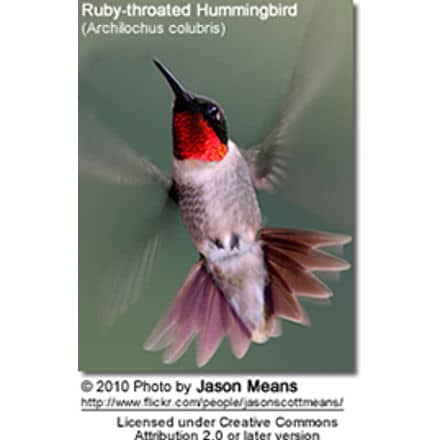
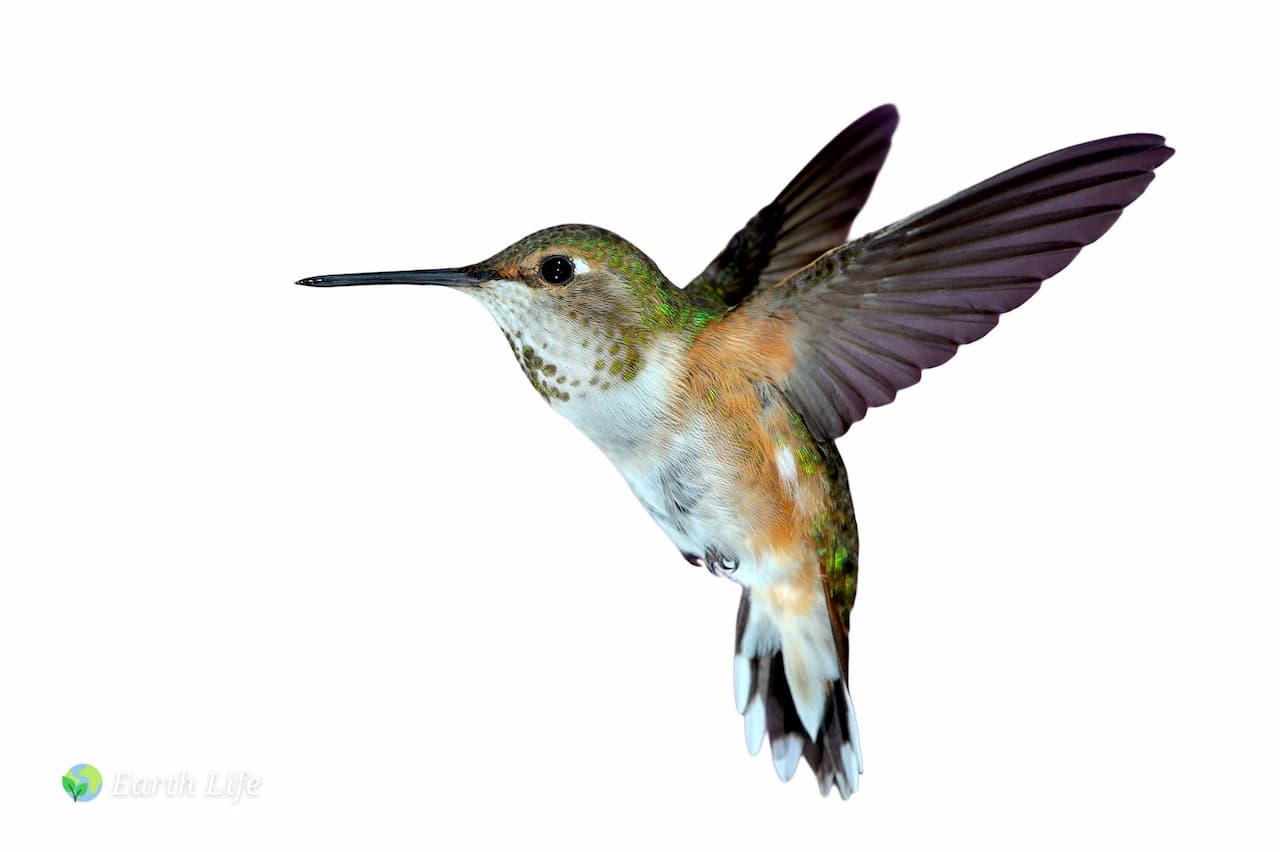
Rufous Hummingbird versus the similar Ruby-throated Hummingbird (Identification)
Anna’s Hummingbirds, Calypte anna – They breed in southern coastal British Columbia (the westernmost of Canada’s provinces). However, Anna’s Hummingbirds have been known to show up in Eastern Canada. Some occur year around in southwestern British Columbia. It is believed that at the end of the breeding season, some move into the high country to take advantage of the blooming mountain flowers. They return to their breeding territory in and around Victoria by early fall. Rare vagrants reached Ontario and Quebec and at least one made it to Newfoundland (the easternmost province of Canada). (Please refer to this article.)
One of the larger and the most vocal hummingbirds in the United States, it is the only species to produce a song; specifically the males produce a complex series of scratchy noises, sounding like a sharp “chee-chee-chee; when moving from flower to flower, they emit toneless “chip” vocalizations. All other hummingbirds in the United States are mostly silent.
They are well known for their territorial behavior; the male makes elaborate dive displays at other birds and sometimes even at people. At the bottom of their dives, they produce high-pitched loud popping sounds with their tail feathers.
Males have glossy dark rose-red throats and crowns, which may appear black or dark purple in low light. The underside is mostly greyish; and the back metallic green.
Females have light grey chests with white and red spotting on the throat, greenish back, and white-tipped tails.
They resemble the Costa’s Hummingbirds, but the male Costa’s Hummingbird‘s gorget (throat feathers) is longer than that of the Anna’s. They are larger than the Rufous Hummingbirds and lack the rusty coloration of the Rufous Hummingbirds.

Black-chinned Hummingbird, Archilochus alexandri – Rare – Breeds in the southern interior of British Columbia.
The male has a black, shimmering throat with a purple edge and pale feathers below that create a collar. However, unless the light is just right, the head looks all black. His back is green and there are some green feathers covering the chest.
The female is pale below (sometimes with a slightly speckled throat) and her back is green.
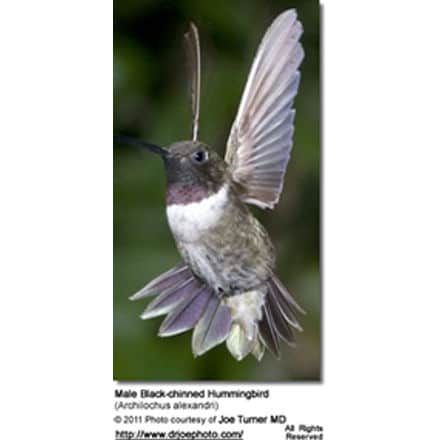

Broad-billed Hummingbirds (Cynanthus latirostris) – Accidental / Vagrants – These mostly Mexican hummingbirds venture into the United States regularly; they mostly visit the southern parts – but a few vagrants travel as far north as Wisconsin.
The male is glossy green above and on the chest. He has a deep blue throat. His straight and slender beak is red with a black tail. His slightly forked tail is dark above, and the undertail feathers are white.
The female is less colorful than the male. Her throat, chest, and belly are light to medium grey. She has a white stripe over each eye.
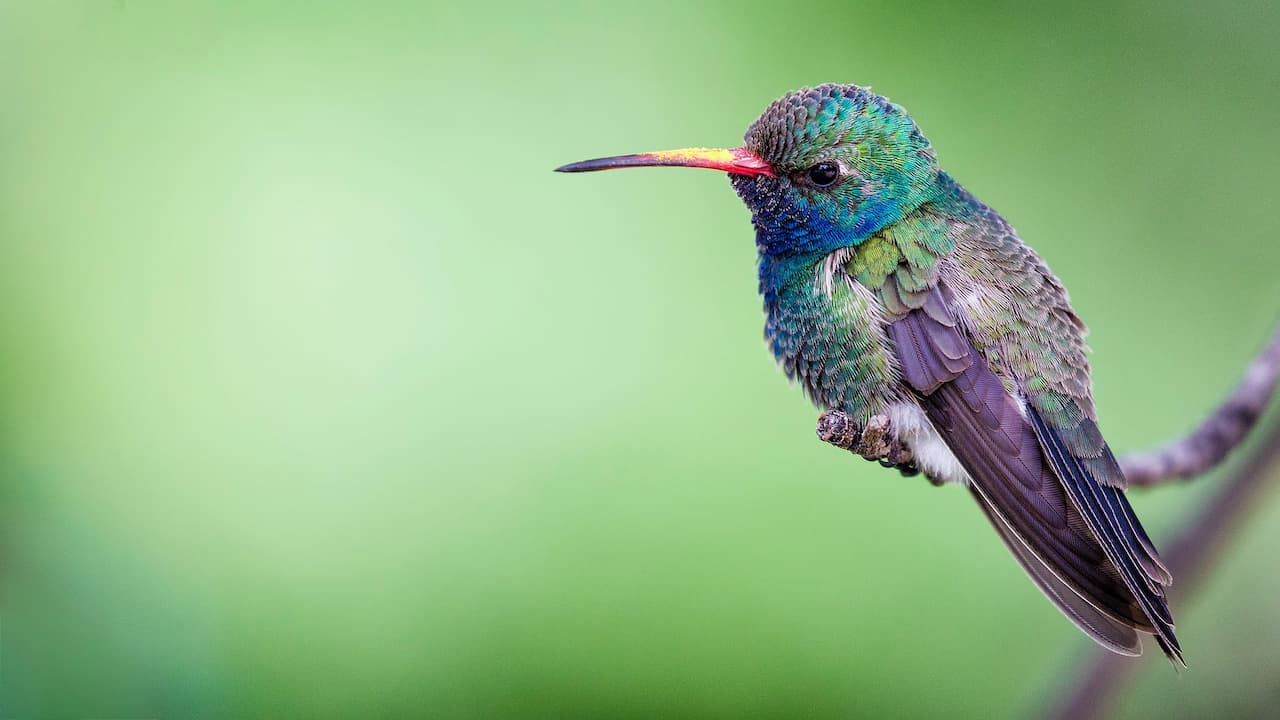
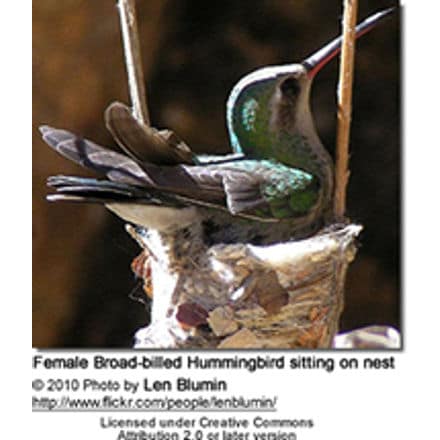
Calliope Hummingbirds, Stellula calliope – This is the smallest of all hummingbird species found in Canada. Found in the interior of British Columbia, east into the mountains of southwestern Alberta. Occasionally wander southwestern Saskatchewan.
They are most easily confused with the Rufous Hummingbirds and the Broad-tailed Hummingbirds.

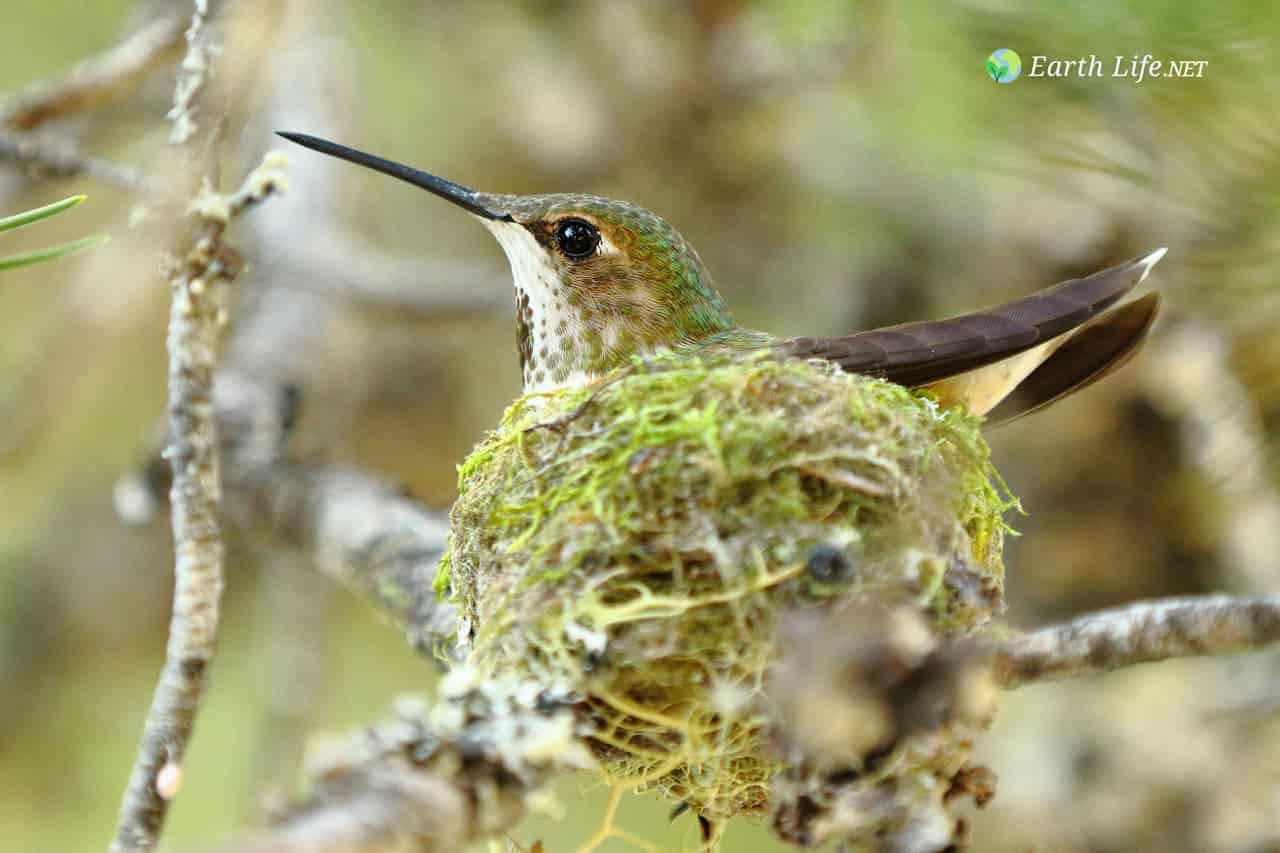
Costa’s Hummingbirds, Calypte costae – Rare or Accidental in Western Canada
Males can easily be identified by the glossy purple crown and long, conspicuous throat feathers that project markedly down the side of the throats, giving it an elongated “moustache” appearance. The back is metallic green.
Females have greyish-green crowns (top of the head) and backs. The chin and the plumage below are whitish, except for some black spotting on her throat. Her flanks are buffy-colored. She has a dark tail with white tips on the outer tail feathers.
They resemble Anna’s Hummingbirds, but the male’s gorget (throat feathers) is longer than that of Anna’s.
Broad-tailed Hummingbirds (Selasphorus platycercus) – Rare vagrants. Reported in Manitoba, Canada
Males can most easily be identified by their iridescent, rose-red throats, white chest feathers metallic green back and crown, and rounded tails. The males’ tails make whistling noises in flight.
Females lack the flashy throat patch of the male and are mostly pale below. Their white-tipped outer tail feathers are rust-colored close to the body and blackish in the center; the tail feathers in the center range from green to blackish.

Green Violetear Hummingbirds (Colibri thalassinus) – Rare / Accidental – They are mostly resident in Mexico and Central America, but some seasonal movements have been observed. They may wander north to the United States and even as far north as Canada.
Xantus’s Hummingbirds (Basilinna xantusii) – Rare vagrants/breeders. This Mexican hummingbird has been venturing into southern California on a regular basis and some nesting activities have been reported. Some travel up the Pacific coast of North America to British Columbia in Canada.
ID: Distinctive white/black eyestripes. Mostly green on the back. Below cinnamon brown. Tail dark and straight. The male has a green throat; the female’s is brownish.
Hummingbird Resources
- Hummingbird Information
- Hummingbird Amazing Facts
- Attracting Hummingbirds to Your Garden
- Hummingbird Species
- Feeding Hummingbirds

